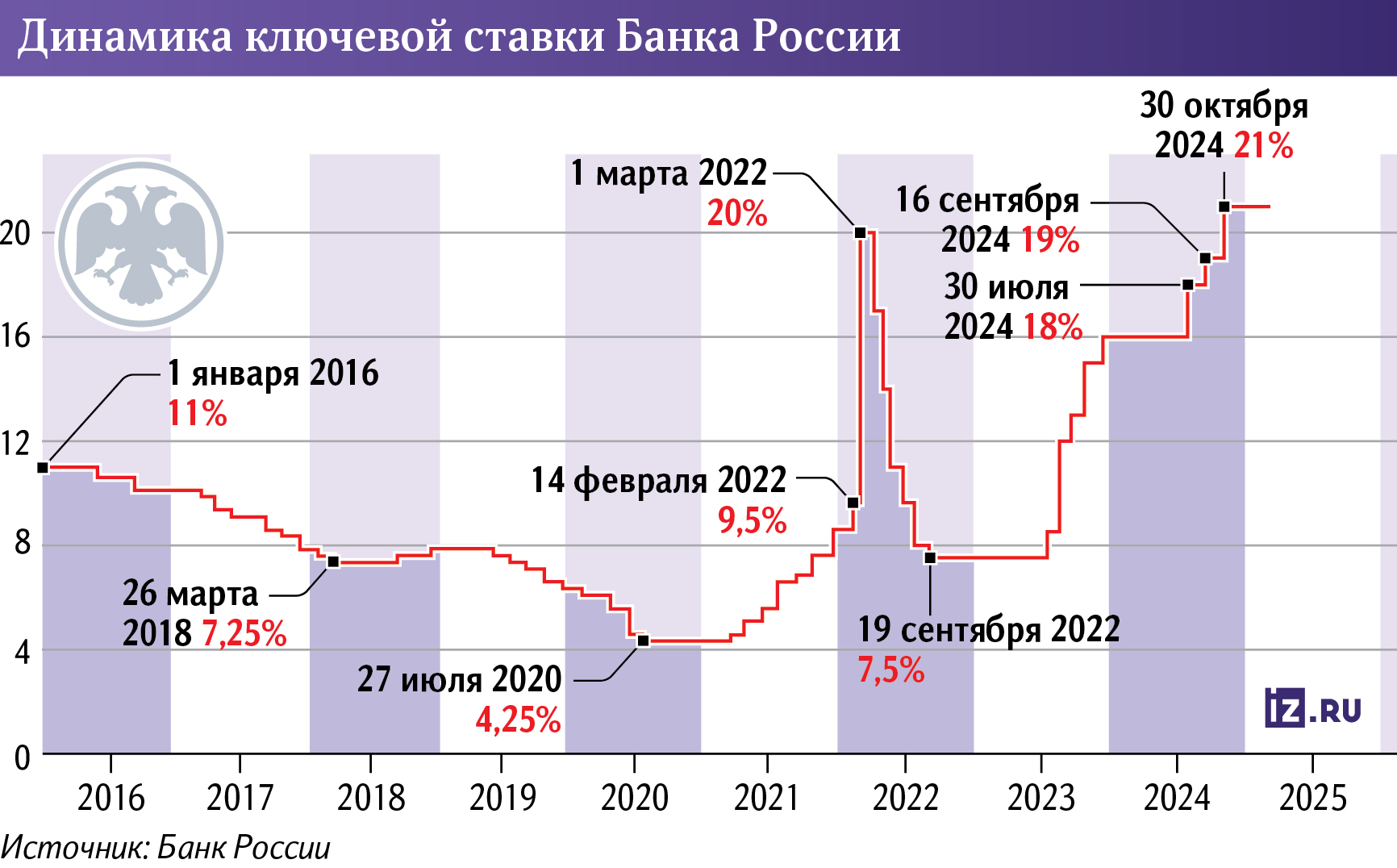The loan is coming: real consumer loan rates have risen to 37%

Banks are trying to cash in on customers while the economy is running high. On average, the total cost of consumer loans from the top 15 players has almost reached 37%, an increase of 1.3 percentage points since the beginning of February, Izvestia found out. This is happening against the background of maintaining the key at the level of 21%. Banks are trying to lock in returns on new loans to offset the cost of expensive deposits. In addition, market participants put risks into the cost of loans — this is a forced reaction to an increase in non-payments. When the cost of loans can still go down and what does the Central Bank's easing have to do with it — in the Izvestia article.
Cash loan rates in banks
The total cost of cash loans in early March averaged almost 37%, according to data from the websites of the top 15 banks in terms of loan portfolio to individuals (Izvestia studied their resources). During the month, the indicator increased by 1.5 percentage points — borrowed funds continue to rise in price even after maintaining the key level at 21% following the results of the Central Bank meeting on February 14.
Since the beginning of February, real consumer loan rates have increased at six of the top 15 banks, including PSB, MKB, Uralsib and MTS Bank, according to data from their websites. The value of the increase step is 0.8–6.5 percentage points. At the same time, two financial institutions have reduced the average CPM — Alfa-Bank and Gazprombank.
The minimum cost of a loan in the top 15 banks on average in the market is 29%, and the maximum is 44%, according to their websites.
Most people take consumer loans for two years (as of January), and the average amount is about 120 thousand rubles, the United Credit Bureau (OKB) reported. With current real rates, the overpayment on such a loan will amount to a third of the initial amount.
Although the key rate remained unchanged in February (21%), market participants note that the Central Bank's actions still affected the rate increase. A PSB representative, in an interview with Izvestia, called the temporary lifting of restrictions on the full cost of all loans until March 31 the main reason for the rise in loan prices.
— Previously, the UCS restriction did not allow banks to compensate for high risks for certain categories of customers by increasing rates. This caused a significant compression of market volumes," the VTB press service explained.
That is, now financial institutions, albeit temporarily, can set any interest on loans — this allows them, in fact, to cash in on customers who are willing to take on debts in such conditions.
Why loans are getting more expensive
The cost of loans is influenced by a lot of conditions and they are not always related to regulation, the press service of the Central Bank explained to Izvestia. First of all, the rates depend on the cost of financing attracted by banks in the form of deposits, but it is influenced by the operating costs of financial institutions and interest rate risks.
Nevertheless, the record increase in deposit rates in previous months really affects the cost of loans, market participants noted. At the end of 2024, their average level reached 22% and exceeded the key one, and there were even offers at 25% per annum. This is an unusual situation — it has developed not only because of expectations of further tightening of the Central Bank's policy, but also because of increased competition for depositors.
— Banks are now striving to maintain or increase the interest margin on retail loans. Since November 2024, they have attracted a considerable amount of expensive liabilities, which are now quite difficult to recapture," explained economist Andrei Barkhota.
The market wants to at least partially allocate these expensive funds in the form of loans with high margins, Andrey Barkhota emphasized. In order to further increase revenues, banks are not only raising loan rates, but also reducing deposit interest at the same time. So, according to Finuslug, a week after the Central Bank's meeting, the average deposit yield was fixed below 21%.
— Banks are giving out fewer loans because of the huge interest rates, so they are trying to earn at least something. Now they will try to apply for as expensive loans as possible, and if demand drops completely, they will compromise," explained economist Alexey Krichevsky.
Will loan rates continue to rise
At the same time, rising interest rates on loans only increases the risks of non-payments on them, said Yuri Belikov, managing director of the Expert RA rating agency. It turns out to be a vicious circle: rising prices make banks make loans more expensive, and over time it becomes harder for the population to pay off new debts, and banks take this into account and include risks in the cost of their products.
— Accordingly, the total cost of new loans continues to grow month by month, despite the key remaining at the same level, — the expert emphasized.
The risks of non-repayment have indeed increased many times, so the share of consumer credit approvals has fallen to 5%, said Alexey Krichevsky. Banks insure themselves and wait for a trick everywhere, because the share of delays is also increasing. All this is ultimately included in the cost of loans.
The consumer loan market has slowed down in recent months, not only because of high interest rates, but also against the background of an increase in the creditworthiness of Russians, said Yuri Belikov. According to data for December, the total amount of citizens' debts to banks amounted to 37 trillion rubles.
Currently, there are no fundamental factors for the growth of rates — the market does not expect a further increase in the key rate, said Vladimir Chernov, analyst at Freedom Finance Global. Consumer price growth slowed last week from 0.23% to 0.16%, and inflation expectations of the population are declining, according to the Central Bank. In addition, representatives of the regulator noted that at a meeting on March 21, they may consider reducing the key rate.
Nevertheless, loans will be able to fall in price only with a real easing of monetary policy, VTB believes.
If the cost of consumer loans increases in March, it will not be as noticeable as in February, concluded Yuri Belikov from Expert RA. Credit risks are not decreasing yet, but raising funds for deposits is cheaper for banks than in previous months. In any case, this creates the prerequisites for stopping the growth in the cost of loans.

Переведено сервисом «Яндекс Переводчик»







